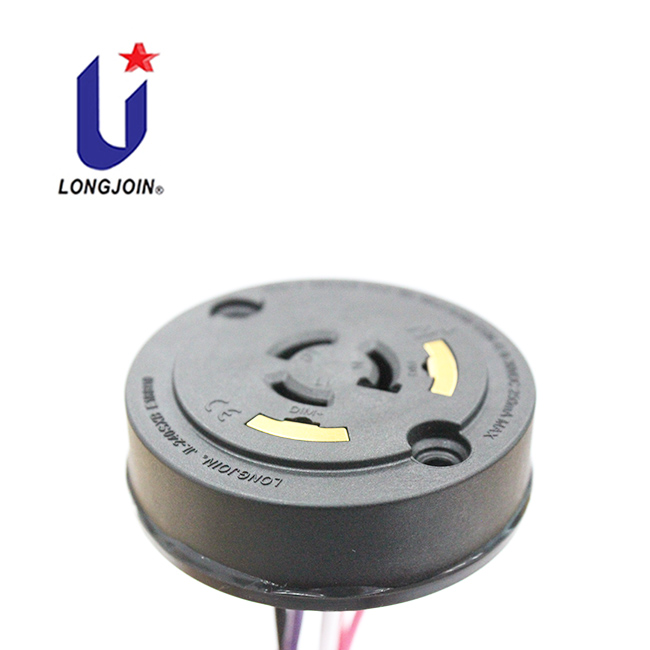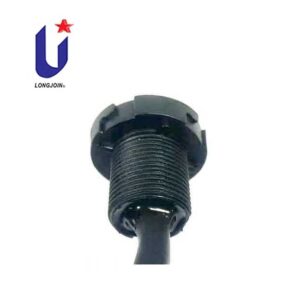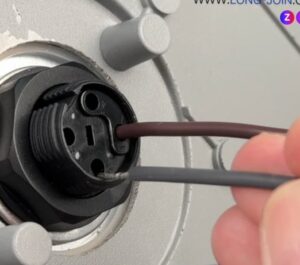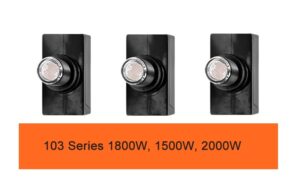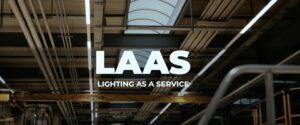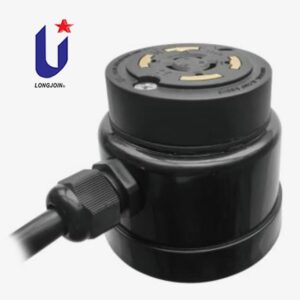Controle de iluminação individual vs. centralizado: qual é o melhor para sua paisagem urbana?
Introduzir
A iluminação urbana é mais do que apenas iluminar ruas e edifícios. É vital para aumentar a segurança e impulsionar a atividade econômica. De modo geral, contribui para a melhoria da qualidade de vida nas cidades. Os avanços tecnológicos tornaram os sistemas de controle de iluminação mais eficientes e adaptáveis, aumentando a conveniência e o controle. Neste artigo, falaremos sobre os benefícios e desafios dos controles de iluminação individuais e centralizados. Vamos nos concentrar em como os produtos da Long-Join podem ser integrados a diversos projetos de planejamento urbano para aumentar a eficiência. Eles aumentarão a adaptabilidade e o controle dos sistemas de iluminação da cidade.
Controle de iluminação individual
O controle individual de iluminação se refere ao sistema em que cada luz pode ser controlada separadamente e funciona de forma independente, podendo também ser programada, permitindo grandes variações e personalizações.
Benefícios do controle de iluminação individualizado
1. Personalização
O controle personalizado permite maior controle sobre diferentes esquemas de iluminação em diferentes áreas. Isso facilita o ajuste de diferentes níveis de iluminação para residências, empresas ou qualquer área específica. Isso melhora a capacidade e a funcionalidade de cada zona.
2. Eficiência Energética
A eficiência energética permite que as luzes sejam ajustadas automaticamente com base no tempo necessário. Eles fazem isso por meio de sensores que pode diminuir ou apagar as luzes durante o dia ou mesmo à noite, quando não há ninguém por perto. Isso reduzirá significativamente o consumo de energia e aumentará a eficiência.
3. Segurança aprimorada
A iluminação adaptativa tem se destacado no aprimoramento da segurança por meio de sensores que respondem a qualquer movimento de pedestres ou veículos. Eles aumentam a iluminação para aumentar a visibilidade. Assim, reduzem os pontos cegos e as áreas com potencial de criminalidade.
Desafios do controle de iluminação individualizado
Alto custo
Equipamentos caros e processos de instalação complexos fazem com que o custo inicial de instalação de luzes individuais seja muito alto.
Problemas de manutenção
Cada luminária é controlada individualmente, o que significa que a manutenção e as falhas em uma unidade precisam ser tratadas individualmente. Isso aumentará os custos e o esforço de manutenção.
Complexidade da instalação
A configuração individual de unidades exige muita mão de obra, planejamento detalhado e um amplo sistema de cabeamento para comunicação.
Rubrica: Soquete tipo Zhaga
Controle de iluminação centralizado - como funciona?
O controle centralizado de iluminação refere-se ao gerenciamento de todo o sistema de iluminação a partir de uma única unidade de controle. Isso permite um controle mais unificado sobre uma ampla área por meio de um sistema de gerenciamento central.
Benefícios
- Gestão facilitada: um sistema centralizado torna mais fácil e conveniente operar todo o sistema de iluminação da cidade a partir de um único local controlado. Isso simplifica seu controle e supervisão.
- Integração de Dados: Um sistema centralizado pode ser facilmente integrado a outros sistemas de gestão centralizados. Ele fornecerá dados úteis para aumentar a eficiência energética e aprimorar o planejamento urbano.
- Escalabilidade: Expandir e atualizar um sistema centralizado é mais escalável e fácil. Isso o torna uma escolha perfeita para cidades em desenvolvimento com extensas redes de iluminação.
Desafios
- Ponto Único de Falha: Um grande desafio de um sistema de iluminação centralizado é a falha da unidade de controle central, que resulta em queda de energia em toda a área controlada. Isso se torna um grande problema até que alternativas sejam buscadas ou reparos sejam feitos.
- Configuração complexa: Configurar um sistema centralizado pode ser uma tarefa difícil. Exige planejamento cuidadoso e integração com a infraestrutura existente da cidade.
- Alto Investimento Inicial: As instalações iniciais de sistemas centralizados podem ser caras. Exigem altos investimentos em tecnologia e configuração de infraestrutura.
Comparação entre controle de iluminação individual e centralizado
Ao comparar controles de iluminação individuais e centralizados, cada sistema apresenta suas vantagens e desvantagens. Ambos podem ser adequados às necessidades do ambiente.
- Eficiência de Controle: Controles individuais proporcionam maior precisão e podem ser ajustados de acordo com necessidades específicas. Um sistema centralizado proporciona uma supervisão mais ampla e facilita a gestão.
- Custo e Manutenção: Sistemas individuais podem ter custos iniciais de investimento e manutenção mais altos, mas são relativamente mais eficientes em termos de energia. Isso reduzirá os custos operacionais ao longo do tempo. No entanto, sistemas centralizados podem exigir manutenção menos frequente, mas têm um custo inicial mais alto.
- Adaptável e flexível: Sistemas individuais são mais flexíveis e adaptáveis a diferentes áreas e necessidades. Por outro lado, sistemas centralizados oferecem uma abordagem mais consistente. São mais vantajosos para ajustes em larga escala.
Tabela de comparação
Recurso | Controle de iluminação individual | Controle de iluminação centralizado |
Controlar | Cada luz é controlada separadamente | Todo o sistema é gerenciado a partir de uma única unidade de controle |
Personalização | Ajustes altamente específicos para diferentes áreas | Moderado – amplo controle sobre grandes áreas |
Eficiência Energética | Os destaques se ajustam automaticamente por meio de sensores | Moderado – otimizado para eficiência geral |
Melhoria da segurança | A iluminação altamente adaptável aumenta a visibilidade | Moderado – melhoria geral através do controle centralizado |
Custo inicial | Equipamentos e instalação de alto custo | Alto – investimento significativo em tecnologia e infraestrutura |
Manutenção | A manutenção individual de cada luz pode ser dispendiosa e trabalhosa | Manutenção centralizada e menos frequente, mas crítica em caso de falha do sistema |
Complexidade da instalação | Alto – trabalho extensivo e planejamento necessários | Integração de alta complexidade com infraestrutura existente |
Escalabilidade | Moderado – cada luz precisa de ajustes individuais | Alto – mais fácil de expandir e atualizar em grandes redes |
Conveniência de gerenciamento | Moderado – requer supervisão de várias unidades | Alto – simplifica o controle e a supervisão de um único local |
Integração de dados | Baixo – limitado a dados de unidades individuais | Alto – integra-se facilmente com outros sistemas de planejamento urbano |
Risco de ponto único de falha | Baixo – a falha afeta apenas unidades individuais | A falha da unidade central alta pode afetar todo o sistema |
Custos operacionais ao longo do tempo | Menor – mais eficiente em termos de energia a longo prazo | Moderado – a economia inicial na manutenção pode ser compensada pelos custos de energia |
Flexibilidade e Adaptabilidade | Alto – adaptável a necessidades e áreas específicas | Moderado – abordagem consistente adequada para ajustes em larga escala |
Impacto Ambiental | Positivo – reduz a poluição luminosa e o consumo de energia | Positivo – a gestão geral de energia reduz a pegada ambiental |
Experiência do Usuário e Percepção Pública | Alto – adaptado às necessidades e preferências locais | Moderado – satisfação geral devido aos níveis de iluminação consistentes |
Palavras finais!
O debate entre sistemas de controle de iluminação individual e centralizado é complexo e depende de vários fatores. Enquanto o controle individual oferece flexibilidade e personalização em um nível granular, o controle centralizado proporciona eficiência e facilidade de gerenciamento. Funciona melhor em larga escala. A escolha entre essas duas opções deve ser feita com base nas necessidades, objetivos e características específicas da paisagem urbana em questão.
Link externo
https://www.sciencedirect.com/topics/engineering/photocell

